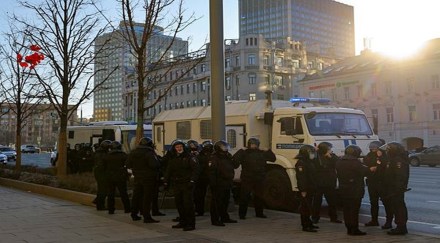Although India’s foreign policy is increasingly aligned with that of the West, especially the US, it also has strategic relationships with major powers like Russia in a multi-polar world. For such reasons, it has preferred a delicate balancing act in not joining the chorus of Western nations in condemning Russia’s war against Ukraine while appealing for an “immediate cessation of violence” in prime minister Narendra Modi’s call to Russian president Vladimir Putin. In contrast to the Western powers framing of Russia’s aggression as violating the sovereignty of the independent nation of Ukraine, India’s PM told the Russian president about his “long-standing conviction that the differences between Russia and the NATO group can only be resolved through honest and sincere dialogue”.
While India’s framing of the raging conflict as being between Russia and NATO is unlikely to please the Western powers that want India to take a much stronger position, India’s appeal to end violence is intended to appease them, assure that it is not in favour of war. India would like the West to believe its response signalled that it is Russia that initiated the war and that is up to the Russian president to find a way out through negotiations. Significantly, India did not condemn Russia’s recognition of the separatist regions of Donetsk and Luhansk. India also abstained from a US-sponsored resolution censuring Russia at the UNSC. All of this indicates India’s sensitivity to Russia’s redlines in the ongoing conflict in Ukraine.
India’s restrained response to the war in Ukraine stems from its limited geopolitical options. If it joins the West, it risks antagonising the time-tested, reliable relations with Russia. At a time of Chinese aggression on its northern and northeastern borders, the last thing India wants is a disruption of Russian defence equipment. More than 60% of Indian defence forces are equipped with Russian weaponry and dependent for spare parts and technology transfers that could be disrupted if India sides with the West on Ukraine. India’s purchase of the Russian S-400 air defence system was intended to prevent attacks from the dragon. To be sure, India has also used US platforms for reconnaissance and surveillance of its northern border, including sourcing winter clothing. But India is concerned that the hostility between West and Russia will push Moscow further in the direction of Beijing. The West’s hostility to Russia after it annexed Crimea in 2014 only led the latter into a deeper embrace with China. India has always felt that it was the West that led to this state of affairs. Obviously, the last thing that India wants now is a Russia-China axis weakening its defence preparedness.
Defence, in fact, has an outsized bearing on India-Russia strategic relations as the economic component lacks sufficient ballast. The fact that Russia is not a major trade partner—two-way trade amounted to only $9.4 billion this fiscal—ought therefore to limit the possible impact that the escalating conflict in Ukraine can have on bilateral trade. With the US and EU agreeing to block certain Russian banks from the SWIFT global interbank payments system as a part of their sanctions against Moscow, Indian exporters will face greater uncertainty on stuck payments. But with India’s good relations with Russia, this problem can easily be tided over if both agree to continue joint work on promoting mutual settlement of payments in national currencies as in the days of the Soviet Union. India’s stance of not taking sides in the confrontation between the West and Russia thus is a more pragmatic response to the fact that its options are constrained. A diplomatic balancing act is therefore just what the doctor ordered.
